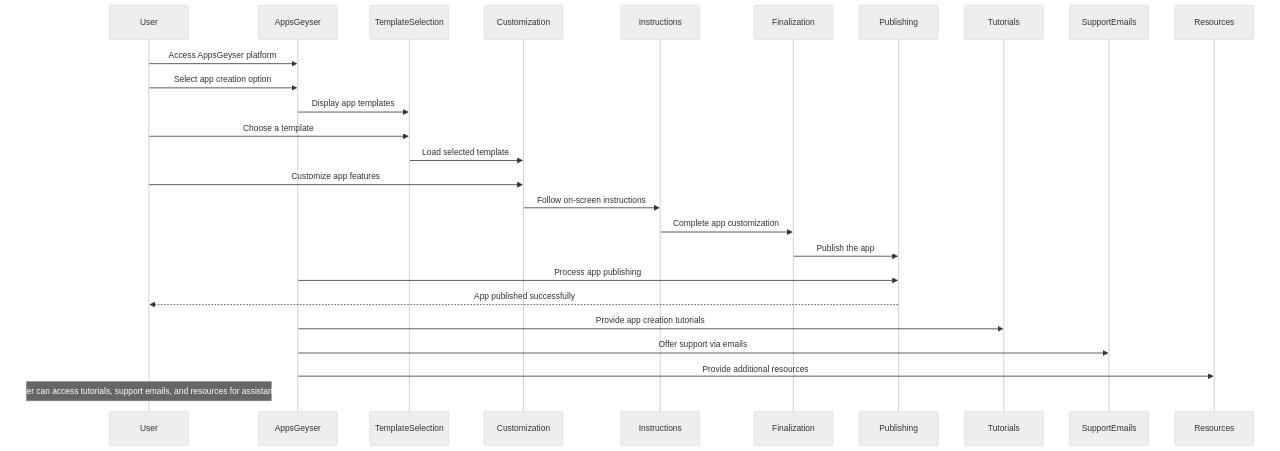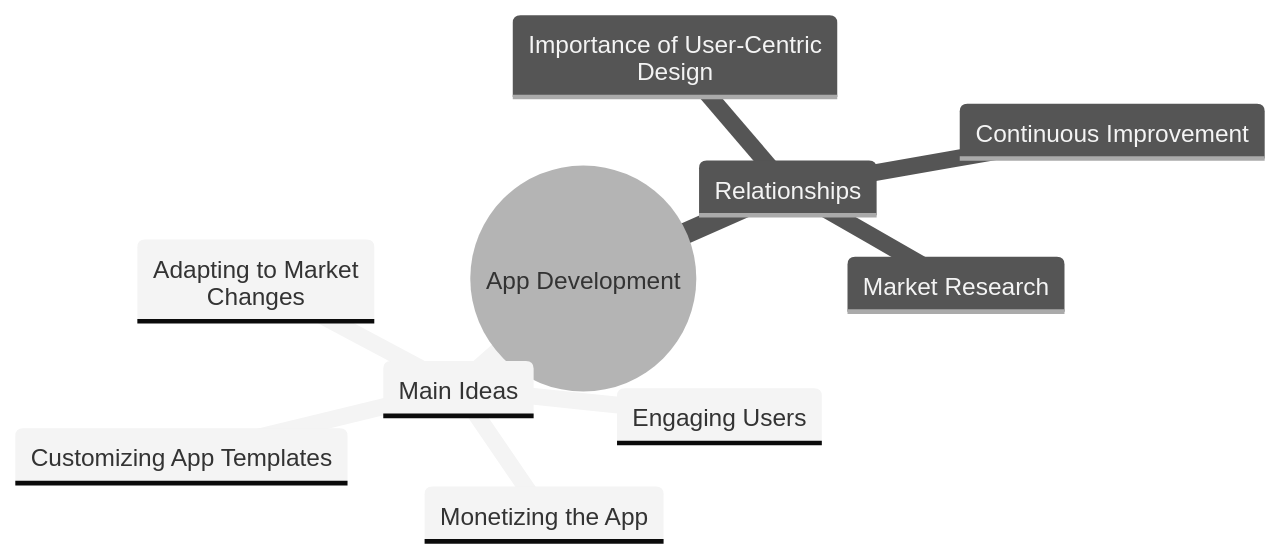Designing Stunning Android Apps: Essential Tips for Beginners
Introduction
The world of app development is constantly evolving, and staying ahead of the curve is essential for success. From understanding the principles of Material Design to customizing app templates and engaging users, there are various strategies that can help you create a unique and profitable app. In this article, we will explore the importance of Material Design in Android app development, the benefits of leveraging platforms like AppsGeyser for app creation, and tips for engaging users and monetizing your app. We will also discuss the process of navigating the publication process and adapting to market changes to ensure your app remains relevant and competitive. By implementing these strategies, you can create a successful app that stands out in the crowded digital landscape
1. Understanding Material Design: The Foundation of Android Apps
Google’s Material Design system is a comprehensive guide for creating engaging digital experiences. It is a vital tool in the toolbox of Android app developers. It emphasizes grid-based layouts, responsive animations and transitions, ample padding, and depth effects like lighting and shadows.
Creating grid-based layouts in Material Design can be achieved using combinations of HTML and CSS. CSS frameworks such as Bootstrap or Materialize facilitate the implementation of responsive grid systems, aligning with Material Design principles. These systems offer predefined classes to divide content into rows and columns, enabling the construction of visually consistent layouts. CSS flexbox or CSS grid can also be leveraged to create custom grid layouts.

Material Design aims to provide a visually pleasing design language that adapts effortlessly across platforms and devices. It offers resources like icons, color palettes, typography, and motion guidelines for cohesive and aesthetically pleasing designs. Tools and frameworks like Material-UI and Material Components for the Web aid in implementing Material Design in various development environments.
Depth effects, a crucial aspect of Material Design, utilize shadows and other visual cues to create depth and hierarchy within the user interface. These techniques make elements appear raised or elevated, enhancing the three-dimensional quality and improving user understanding of spatial relationships between elements.
Material Design is a continually evolving system, with regular updates and new features introduced to enhance user digital experiences. Key updates include Material Design 3 for Compose, and Material Design Components (MDC) version 1.7.0, which implement dynamic color lessons from the Chrome team, showcasing Material Design’s continuous evolution.
Understanding Material Design guidelines is vital for creating apps that balance aesthetics and functionality. Services like AppsGeyser can be utilized to convert ideas into fully functional apps with customizable features, incorporating Material Design principles for enhanced visual appeal. AppsGeyser provides a user-friendly interface, making it easy for individuals without coding experience to create professional-looking apps
2. Leveraging Appsgeyser: A Beginner’s Guide to App Creation
AppsGeyser is an intuitive platform that simplifies the process of app creation, making it accessible to both beginners and experts. It offers a variety of over 35 app templates at no cost, which can be customized to meet your specific needs. The platform is equipped with extensive tutorials and guides to ensure a seamless app creation journey. The best part? No prior coding knowledge is required. You can swiftly design, create, and launch your Android app, making it an ideal solution for entrepreneurs and small businesses looking to expand their digital presence and engage with their customers via mobile apps.
AppsGeyser goes beyond app creation, offering a variety of app templates for different purposes such as business, education, gaming, and social media. Users are also given the option to convert websites or HTML files into fully functional apps. The creation form on AppsGeyser is designed to be user-friendly, prompting users to fill in all necessary fields. If any required fields are left blank, the form will promptly display an error message.
The platform emphasizes the use of proper alphanumeric characters in the relevant fields, preferring Latin letters unless specified otherwise. However, it also caters to a global audience by allowing the creation of apps in different languages that do not require the use of Latin letters. Users are prompted to upload files of the correct size and images with suitable dimensions, as stipulated by the creation form. In case of any issues encountered during the process, users can raise a support ticket detailing the problem, complete with the form URL and a screenshot for reference.
AppsGeyser’s offerings also include a wealth of resources and support for app creation. It offers premium services for users seeking advanced features and the convenience of converting websites to apps and HTML to APK. To further engage its user base, AppsGeyser runs a referral program and provides resources on boosting Telegram channels. The platform is highly regarded for its customer service automation and has received testimonials from numerous satisfied customers. It maintains an active presence on various social media platforms such as Facebook, Twitter, YouTube, and Telegram.”
To customize AppsGeyser app templates, follow these steps:

- Go to the AppsGeyser website.
- Look for the option to create an app or convert a website into an app.
- Click on the relevant link to start the app creation process.
- Once in the app creation section, browse through the available templates and select the one that suits your needs.
- After selecting a template, customize various aspects of the app, such as the logo, colors, layout, and content.
- Follow the on-screen instructions to make the desired changes to your app template.
- Once satisfied with the customization, proceed to the next steps to finalize and publish your app.
To engage customers through AppsGeyser apps, utilize the platform’s features and functionalities.
Boost customer engagement with your own app!
You can create and customize your own apps, providing your customers with a convenient and accessible way to interact with your brand. Offer exclusive content, promotions, and rewards through the app to incentivize customer engagement. AppsGeyser also provides various tools and widgets that enhance customer engagement such as a search function and a help center widget for customer support
3. Customizing App Templates: Making Your App Unique
The power of Appsgeyser lies in its vast array of templates, yet the true magic happens when you infuse your unique brand identity into the app. The design of your app should mirror your brand’s ethos and meet the distinct requirements of your target audience. This is achieved by paying attention to the minutiae of your app’s design.

Take into consideration elements like color scheme, typography, and iconography, ensuring they are in harmony with your brand’s aesthetic. However, aesthetics alone don’t create a successful app. The user interface must be straightforward and easily navigable.
The concept of “plussing” can aid in this. It implies enhancing a basic design with additional elements, providing a unique touch. Techniques like exponential grids can be employed for a balanced layout, and color grading can result in a harmonious interface. Tweaking typography can help you create unique text elements.
Ponder on converting buttons into menus with primary actions, providing users with additional choices. Details are critical. Enhance the user experience by optimizing performance, incorporating accessibility features, and auditing text fields.
Customizing your app not only sets it apart but also improves the user experience, which is crucial for user engagement and retention.
As an entrepreneur, app templates are a boon, saving substantial development time and resources. These templates offer a ready-to-use framework that can be highly personalized, eliminating the need to recruit developers, designers, and product managers. This efficient management of resources can aid in better cash flow.
Your app should provide value beyond functionality. It should be distinguishable from competitors. With customization and attention to detail, you can craft an app that resonates with your audience, giving your brand a competitive advantage.
Intuitive user interfaces in AppsGeyser apps are crucial as they offer a user-friendly, easy-to-navigate experience.
Create a user-friendly app with AppsGeyser!
This quick, confusion-free interaction leads to increased user satisfaction, higher engagement, and improved retention rates
4. Tips for Engaging Your Users: Enhancing the Customer Experience with Mobile Apps
User engagement is pivotal to the success of your application. Factors such as the promptness of your app’s load time and a user-friendly interface play a significant role in this. Keeping the interface simple and intuitive ensures navigation is seamless for users, enhancing their experience. Clear labels and instructions further aid this process, eliminating any potential confusion. Familiar design patterns and conventions can help create a sense of comfort and familiarity for users, making them more likely to engage with your app.
It’s also crucial to update your app’s content regularly to maintain users’ interest. Features that encourage user interaction, such as push notifications or in-app messaging, can help maintain an ongoing communication with your users, thus keeping them actively engaged.
Remember, not all users will have the same level of familiarity with new software. Some may struggle with using it effectively, finding its value, or justifying the cost. Therefore, it is essential to guide them through the process. Identifying the “happy path,” a sequence of steps a user needs to take to derive value from the software, is a helpful strategy.
In the initial stage, the focus should be on activation, with the goal of encouraging users to use the software in a way that provides value. The second stage involves intensification, where the objective is to increase the software’s appeal to the point where users are willing to pay for it.
During the activation phase, different types of emails, including step-by-step tutorials, support emails, and victory emails, can be sent to users. Once users complete the happy path, the focus can shift to intensification. Here, emails can be employed to promote specific features, provide case studies, demonstrate the product in action, answer queries, highlight the benefits over time, and underline the repercussions of inaction.
Remember that engaging new users early and frequently is key to retaining them. To enhance user retention and engagement, it’s recommended to use fewer welcome pages with clear and concise copy. Including a call-to-action (CTA) button on the first welcome page can prompt users to take their first essential action.
Personalizing welcome pages, landing pages, and in-app messages based on user data can improve user engagement. Providing a preview of the app’s user interface can boost app retention. Tooltips and hotspots can be used to introduce new users to key features within the app. A progress bar or onboarding checklist can motivate new users to complete tasks and educate them on how to use the app. Offering the option to skip tutorials and customizing required app permissions can enhance the user experience. Providing in-app customer support and sending welcome emails can help build a relationship with new users
5. Navigating the Publication Process: From Draft to Live App
The exhilarating phase of app publication can be a smooth sail with the right tools and guidance. With platforms like AppsGeyser, your meticulously crafted app can effortlessly make its way to the Google Play Store. As you navigate the labyrinth of app publication, AppsGeyser ensures your digital creation adheres to Google’s strict guidelines.
A significant part of this process is rigorous app testing before its grand debut. This step is crucial to uncover and fix any lurking bugs or issues, promising a seamless user experience. It’s also advantageous to invite feedback from a select user group before the official launch. Their valuable insights can highlight areas needing further refinement, thereby enhancing app performance.
But bear in mind, the app’s publication is not the finish line; it’s the beginning of an evolving journey. In the dynamic app market, it’s vital to continually update and improve your app, keeping pace with user feedback and market trends.
Also, complying with Apple’s App Store Review Guidelines, such as providing a superior app-like UI and optimizing forms for mobile input, can boost your approval chances.
Lastly, it’s imperative to meet all legal requirements for app development and have resources for further assistance and guidance in app development and publishing.
Although this journey may seem overwhelming, with tools like AppsGeyser and adherence to Google Play Store’s guidelines, your app can truly make its mark in the digital world
6. Monetizing Your App: Strategies for Startups and Small Businesses
Generating income from your app can be a substantial boon for your enterprise, given the right strategies. A popular approach is in-app advertising, where your app becomes a platform for displaying ads. Alternatively, you can utilize in-app purchases, offering users the option to pay for extra features or content. A freemium model can also be effective, providing a basic version of your app for free, and a premium version with advanced features for a price.

Appsgeyser provides premium options and plans for experienced users and businesses, granting full control over ads and removing Appsgeyser branding from your app. It’s crucial to align your monetization strategy with your business objectives and ensure it adds value for your users.
Another potential strategy is to act as a distribution channel for other merchants’ products or services, earning a commission for each sale made via your app. Once your app has gained traction, you might consider sponsorship placements, where sponsors pay for prominent visibility within your app. It’s key to analyze user metrics and demographics to make informed decisions about your monetization strategy. It’s worth noting that the most effective approach might combine several of these techniques.
Remember, there’s no one-size-fits-all solution to app monetization, and the most effective strategy will depend on the specifics of your app and its user base. For instance, Red Foundry, a custom mobile app development company, has successfully leveraged multiple monetization strategies. The key is to carefully consider your app’s value proposition, be transparent with users about the pricing and features of any subscriptions or purchases, and continuously optimize your monetization strategies based on user feedback and data analysis. Keep in mind the importance of marketing strategies, like app store optimization and paid acquisition, which can help reach a larger audience and increase your app’s income
7. Adapting to Market Changes: Keeping Your App Relevant and Competitive
In the ever-changing landscape of the mobile app market, a flexible and dynamic approach is vital. Your app is not a static product but a continually evolving entity that adapts to market trends and user preferences. Regular enhancements, feature updates, and refinements based on user feedback are key to maintain its relevance and competitiveness.
Staying updated with the latest industry trends and technologies is another effective strategy. Regular market research, active participation in industry conferences, and networking with other professionals can provide valuable insights. For instance, resources like Adjust’s “Mastering SKAN 4” ebook and insights from exporting Chinese apps globally can be instrumental in optimizing campaign performance and driving growth.
Understanding your users and their expectations is crucial. Avoid pitfalls like poor UX design and subpar performance by focusing on user engagement and retention. Experimentation and app store optimization, including keyword selection and performance monitoring, play a significant role in this regard.
Furthermore, it’s important to leverage app analytics to drive user growth, improve retention, and increase monetization. Tools like heatmaps, recorded user sessions, and A/B testing can provide insights into user behavior and help improve your app’s UI design.
Being agile and flexible in the development process allows for quick adjustments to changing market demands. A diversified app portfolio and exploring new markets can also help mitigate risks. By implementing these strategies, you can ensure your app’s longevity in the competitive mobile app market
Conclusion
In conclusion, this article emphasizes the importance of Material Design in Android app development and the benefits of leveraging platforms like AppsGeyser for app creation. Material Design provides a comprehensive guide for creating engaging digital experiences, with its grid-based layouts, responsive animations, and depth effects. By implementing Material Design principles, developers can create visually pleasing and user-friendly apps that adapt effortlessly across platforms and devices.
AppsGeyser offers a user-friendly platform that simplifies the process of app creation, making it accessible to beginners and experts alike. With over 35 customizable app templates and extensive tutorials, individuals can quickly design, create, and launch their Android apps without any prior coding knowledge. This platform not only saves time and resources but also allows entrepreneurs and small businesses to expand their digital presence and engage with customers through mobile apps. By utilizing the features and functionalities of AppsGeyser apps, such as push notifications and exclusive content, users can enhance customer engagement and provide a convenient way for customers to interact with their brand.
To create a successful app that stands out in the crowded digital landscape, it is essential to understand Material Design principles and leverage platforms like AppsGeyser for efficient app creation. By implementing these strategies, individuals can create unique and profitable apps that meet the needs of their target audience. Start now to unlock the potential of Material Design in Android app development by using AppsGeyser’s user-friendly platform.
